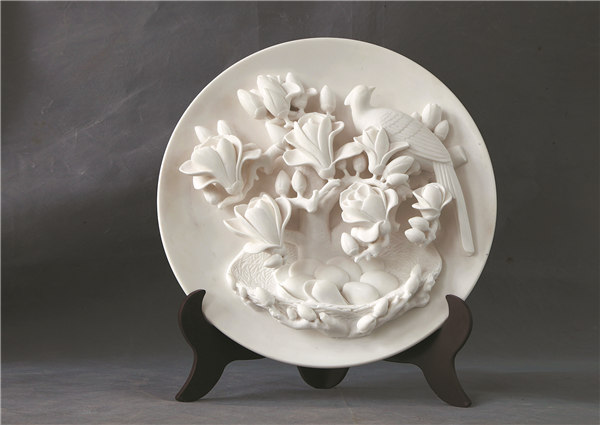

Additionally, the folk wisdom in transporting those heavy boulders all the way to the Forbidden City fascinated him. "For instance, the ancient people poured water on the road in winter, and rolled the stones over the ice surface," Liu says.
As his field research progressed, Liu developed a thorough understanding of the history of white marble mining and carving.
Since white marble in Dashiwo was extensively used for royal construction during the Ming (1368-1644) and Qing (1644-1911) dynasties, the mining was directly controlled by the royal family then, and skilled craftsmen and laborers were commissioned from all over the country for related work in the town.
With his art background, Liu quickly grasped major white marble carving techniques. He also managed to recruit 30 students in the first year of school after going to the villages and enterprises in Beijing and taught them himself.
In 2002, Liu got to play a major role in building the white marble cultural palace in the town. The palace is made of nearly 10,000 tons of premium white marble, covering an area of over 1,200 square meters and standing 27.96 meters tall. The carved decorative window screens each take up an area of over 7 sq m, the largest of their kind, according to experts.
Other highlights of the building include reclining dragons on the dome and patterns of seismography and ancient books, highlighting the cultural significance and strength of white marble. To complete this monumental project, Liu devised six specific strategies, including strict material selection, specialized design and processing, fine polishing and waxing after installation.
The success of the palace has prompted Liu to explore further afield, restoring the tradition while making inroads into innovation.